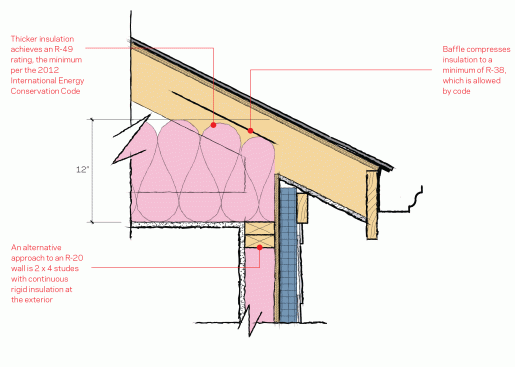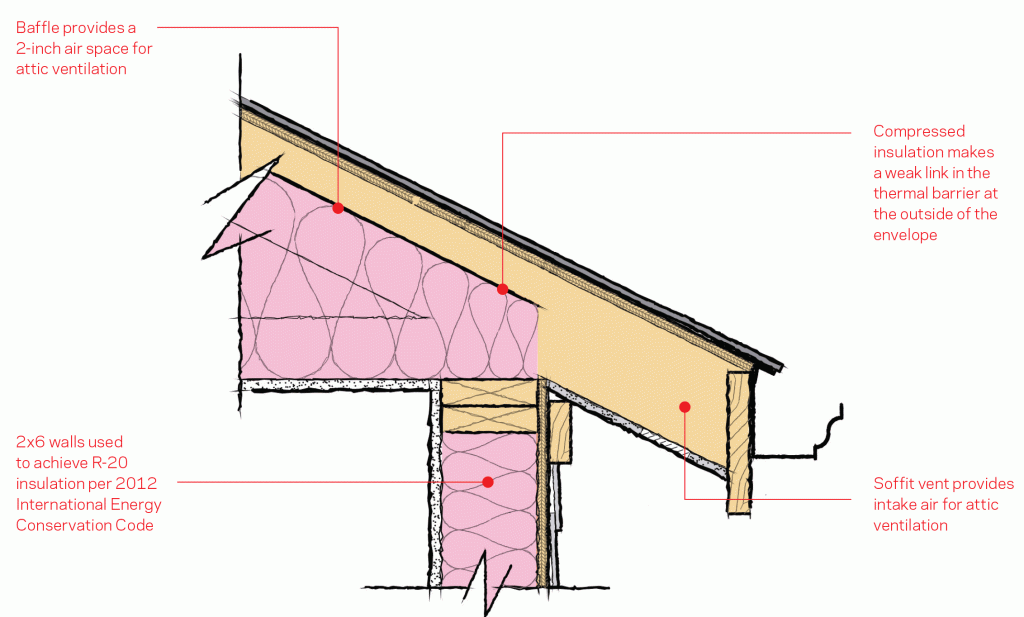Old methods don’t pass muster anymore with current building codes, the International Energy Conservation Code (IECC) in particular. Insulation values are increasing. There’s more emphasis on the envelope as a whole. Weak links are being strengthened, or they’re being eliminated altogether.
I sometimes hear, “That isn’t required by code,” or “We do the code minimum, and that’s OK,” from builders. The problem is, it’s not OK. Consumers no longer accept minimums, and they care about energy usage.
One of the many ways we’ve anticipated consumer demand and upcoming code changes is by raising the top chord of the roof truss. We create a “heel” that lets the full depth of the attic insulation extend to the outer edge of the frame wall. This eliminates the pinching of the insulation that creates a thermal break, and it still allows for ventilating the attic properly.
I know—change isn’t easy. Over the years, we’ve encouraged our builders to incorporate this approach in increments. Going from a standard truss setup to a 4-inch heel to an 8-inch heel and now a 12-inch heel is now our standard. Initially we got push back, but when the final pricing comes in it, this system wins out because there’s value in it.

KGA Studio Architects
Moving Up 12-inch truss heels help meet the 2012 International Energy Compliance Codes and allow for a better R-ratings.
Besides the obvious plus—a tighter envelope, there’s more: a great opportunity to encourage your sales force to capitalize on this hidden feature. By explaining the concept and benefits of a raised heel to potential buyers, they can educate consumers while arming them with questions to take to the next builder. Who won’t be nearly as able to provide good answers as your people can.



